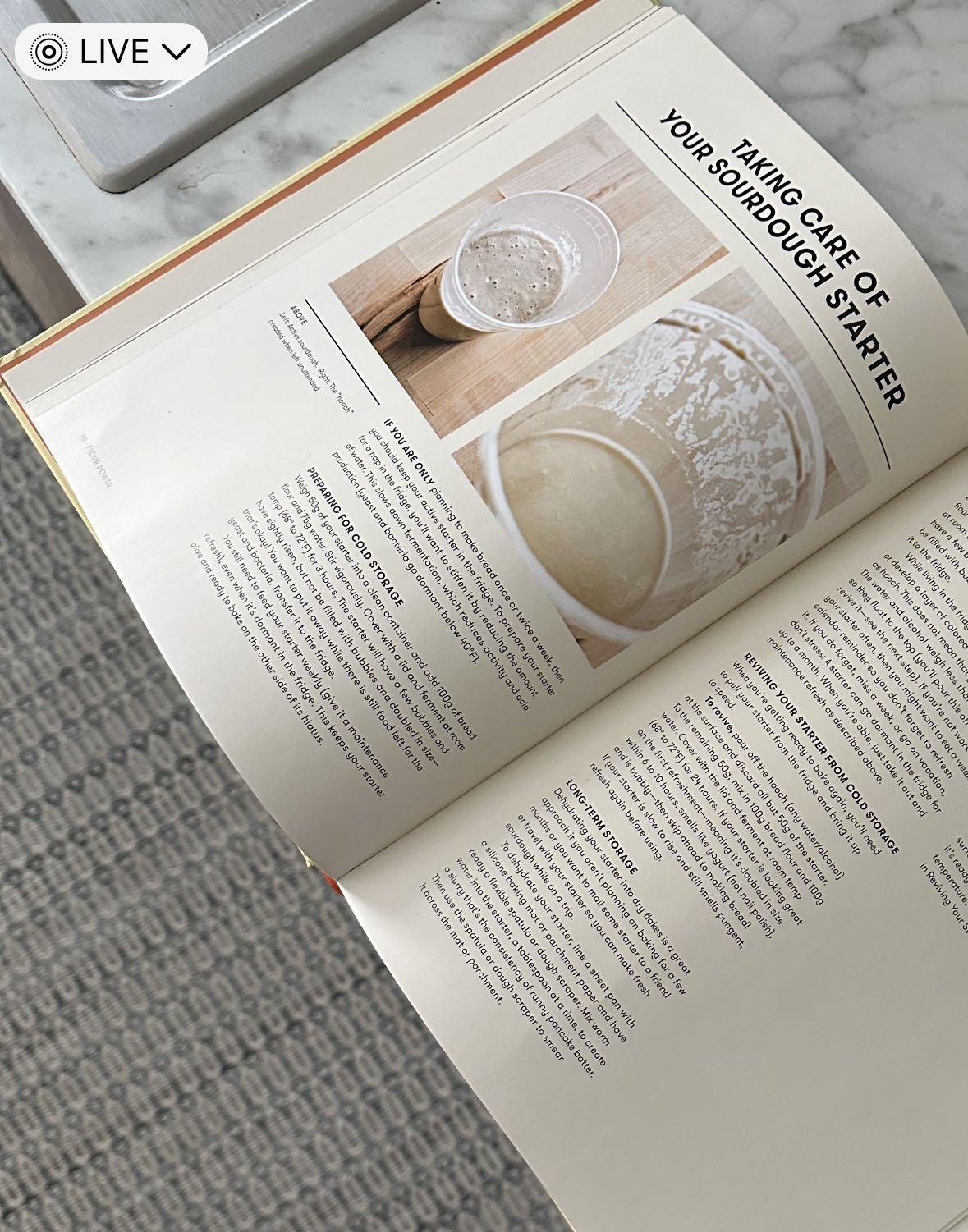It all started with one book. One year ago, I found myself in Brooklyn and came across an old visited bookstore called Word. I immediately stumbled across a book titled Flour Power…
Back in Pittsburgh, the goal for the year was to create a sourdough starter, and to grow our own food and live a more self sufficient life 🌱🌸
Nate and I were in the kitchen and decided to make our own Sourdough starter. Day 1 was easy.
Sourdough starter is essentially a mixture of flour and water that captures wild yeast and lactobacilli from the environment. These microorganisms form a symbiotic relationship, fermenting the mixture and producing gases that live in bread. Unlike commercial yeast, which provides a uniform rise and flavor, sourdough starter introduces character to the bread, resulting in a tangy taste and distinctive aroma.
When we decided to choose what kind of started to make, we considered what breads we were going to bake. Whole grain flours such as rye or whole wheat are often preferred for their higher microbial content, but all-purpose flour works well too.
So we started. We needed to buy a scale in order to get the correct measurements into the recipe. Stir the mixture until well combined, then loosely cover the container with a lid or cloth. Place it in a warm spot, ideally around 70-75°F (21-24°C), and allow the natural microorganisms in the environment to colonize the mixture.
Nurturing Your Starter: Over the next few days, we began to see signs of life as bubbles form and the mixture begins to ferment. This is the wild yeast at work, converting sugars in the flour into carbon dioxide and alcohol. Each night, we discarded a portion of the starter and fed it with equal parts of flour and water. This helps maintain a balanced ecosystem and encourages the growth of healthy microorganisms. As the starter matures, you'll notice its aroma becoming more complex, with hints of acidity and fermentation.
The bread. Once your sourdough starter is active and bubbly, it's time to put it to use. Incorporate it into your favorite bread recipes, experimenting with different flours, hydration levels, and fermentation times. Above is called the Workweek bread. Whether you prefer rustic country loaves or tender sandwich bread, the possibilities are endless
Quick recap:
a. Day 1: Mixing the initial flour and water to create a basic mixture.
b. Days 2-7: Daily feedings, where you discard a portion of the mixture and replenish it with fresh flour and water.
c. Observing the signs of fermentation, such as bubbles and the sour aroma.
In a world filled with mass-produced breads, there's something deeply satisfying about crafting your own sourdough starter and using it to bake homemade loaves. Beyond its role as a leavening agent, sourdough starter embodies a connection to tradition and the natural world, reminding us of the simple pleasures found in the kitchen. So gather your flour and water, embark on this culinary adventure, and discover the timeless art of breadmaking with sourdough starter as your guide. So much gratitude for the experience and excitement of future culinary adventures..
Making bread for the first time was more than just a culinary experiment – it's a journey of love, learning, and shared experiences. And so, as we savored each buttery bite of our freshly baked bread, we knew that this was just the beginning of many more culinary adventures to come – a shared journey filled with love, laughter, and the simple joy of creating something beautiful together. Here's to many more baking adventures in the kitchen and a lifetime of delicious memories.
Patience is a Virtue. A well-established starter takes time to develop its full flavor profile and strength.






